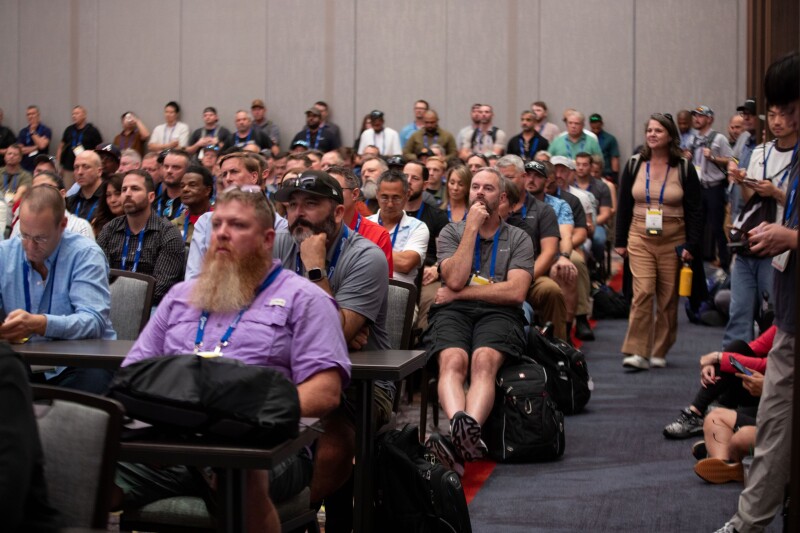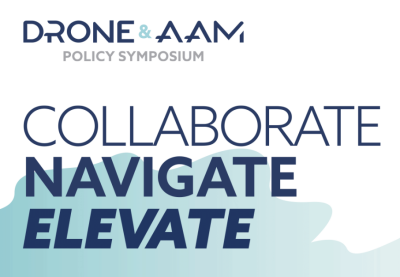Governments all around the world are looking to maintain and improve their infrastructure such as bridges, utilities, dams, and more. In many places, these critical structures are aging out at the same time, putting extreme demand on their upkeep, all while dealing with a shrinking workforce. As a result, infrastructure owners are turning to new technologies to streamline workflows and ensure that citizens are able to keep their home powered and reach crucial destinations without issue.
UAVs are becoming a big piece of that infrastructure inspection puzzle, but as operators know there are a number of evolving regulations, from safety considerations to beyond visual line of sight (BVLOS) operations, that need to be tracked to maintain compliance. At this year’s Commercial UAV Expo, a session entitled Navigating Regulation in Infrastructure Projects covered this very topic with insights from industry experts and drone operators who are working through these very issues.
The session started with a panel discussion talking about the evolving regulatory framework that must be considered for drone operators working on infrastructure inspection projects. The panel was moderated by Rob Knochenhauer, Director of Regulatory Affairs with Censys Technologies Corporation and included the following speakers:
- Jenn Player, Head of Global Aviation Regulatory Affairs, Skydio
- Aaron Chamberlin, Senior Transportation Engineer, Caltrans
- Andy Schwartz, Senior Director, Radio, Security & UAV Systems, NJ Transit
The discussion covered a number of different topics about these topics largely in the context of transportation systems, which makes sense given the participation of panelists from two of the largest transportation departments in the United States. Both Chamberlin and Schwartz spoke about how their departments have utilized drones, with the latter noting that their usage began with inspection radio towers before evolving from there.
Chamberlin, meanwhile, discussed the financial savings the department has seen by the use of drone inspections for roads and bridges. He said that, on average, a lane closure costs about $6,000 but that drones can eliminate those costs by flying above the roads instead.
In getting to the regulatory piece of the discussion, some interesting points were made about surprising challenges that popped up, and more surprisingly what weren’t the challenges. Schwartz and Chamberlain agreed that getting the waivers and dealing with the FAA hasn’t been the challenging part of the process. Instead, some of the challenges they brought up have been around operationalizing after receiving the waivers, and training their workforce on the technologies. Schwartz did mention cooperation with Warren Community College as a help for the latter point.
One of the big points toward the end came from Player, who pointed out that ultimately the idea behind these new rulemaking efforts is to support the industry. She said, “The goal of this new rulemaking is to get us out of this world that you [Knochenhauer] and I as rulemakers help folks like Aaron and Andy do the things where they really get value and benefit society, to let you do that with a little less paperwork involved and get your operations scaled up. That’s the whole idea.”
Following the panel discussion, those in attendance for this session also had the opportunity to see a trio of presentations from other industry experts. Those began with Wendy Ljungren, Chief Operating Officer with Anzen Unmanned. In her talk, Ljungren talked about how drone operators in this space can be preparing for BVLOS under current regulations, as well as how to stay ready for future changes amid the wait for FAA BVLOS regulations to come down. She specifically highlighted the work of one company, Asylon Robotics, and how they matured their organization and safety culture to obtain FAA approval for complex operations including BVLOS over people and vehicles in controlled airspace.
Kapil Mittal, Global Head of Digital Airspace for Ericcson Drone, was next to present, speaking about the future of airspace management and navigation. He discussed the necessity for reliable and high-performing communications, with innovations like 4G and especially 5G hopefully shepherding in the future of digital airspace. He discussed the role of spectrum regulators looking at ways to make use of commercial spectrum to cover the air, noting that the factors are an important part of the UTM readiness index of individual countries to develop regulations, standards, procedures, and technology maturity levels to support automated flight approvals and management of beyond visual line of sight.
Finally, Tim J. Nohara, President & CEO of Accipiter Radar Technologies, presented about how airspace can and will stay safe as BVLOS operations become more commonplace. His presentation touched on the high demand these operations are carrying as governments look to scale new, more sustainable energy generation. His presentation discussed new, data-driven technologies and methodologies designed to ensure that surveillance-based detect and avoid or detect and alert capabilities function as intended and maintain safe airways for both crewed and uncrewed aircraft.
As regulations around this topic continue to shift, and demand for accurate and efficient infrastructure inspection only increases, BVLOS operations are going to be more commonplace. For operators, keeping up with regulations and ensuring safe flights is paramount to their successful operation.















Comments